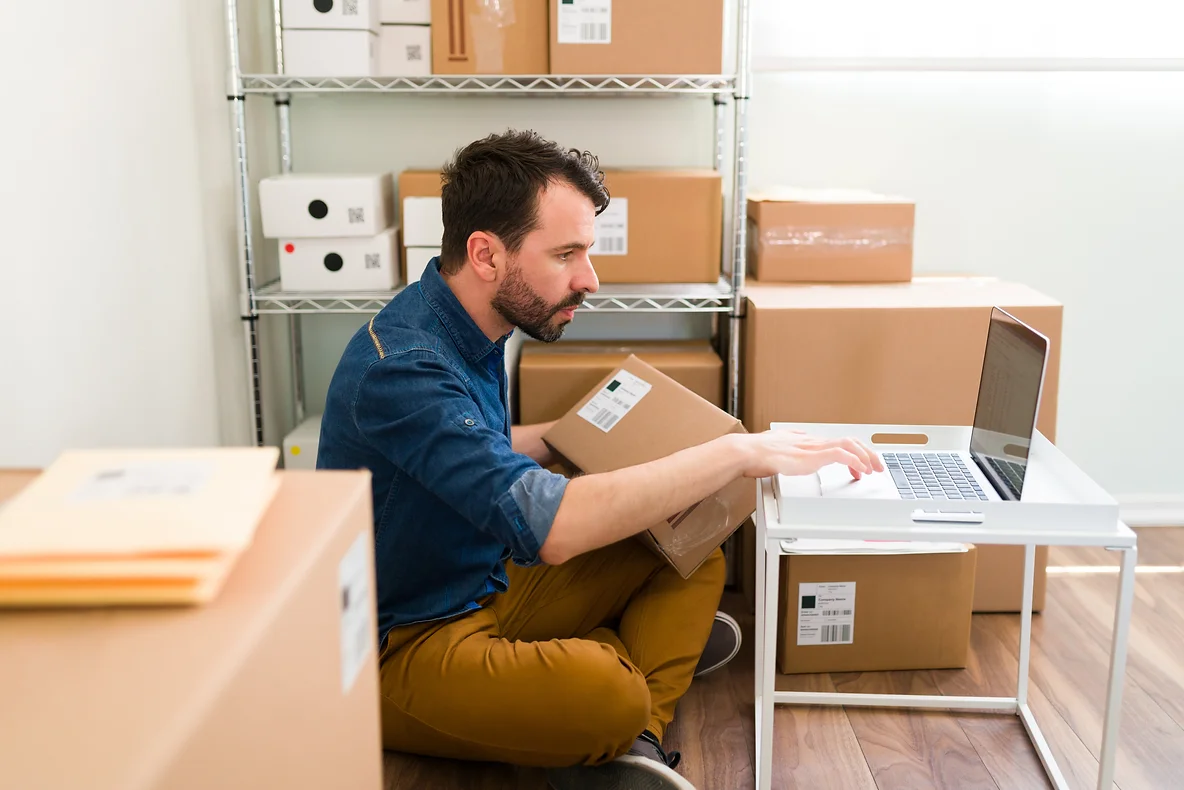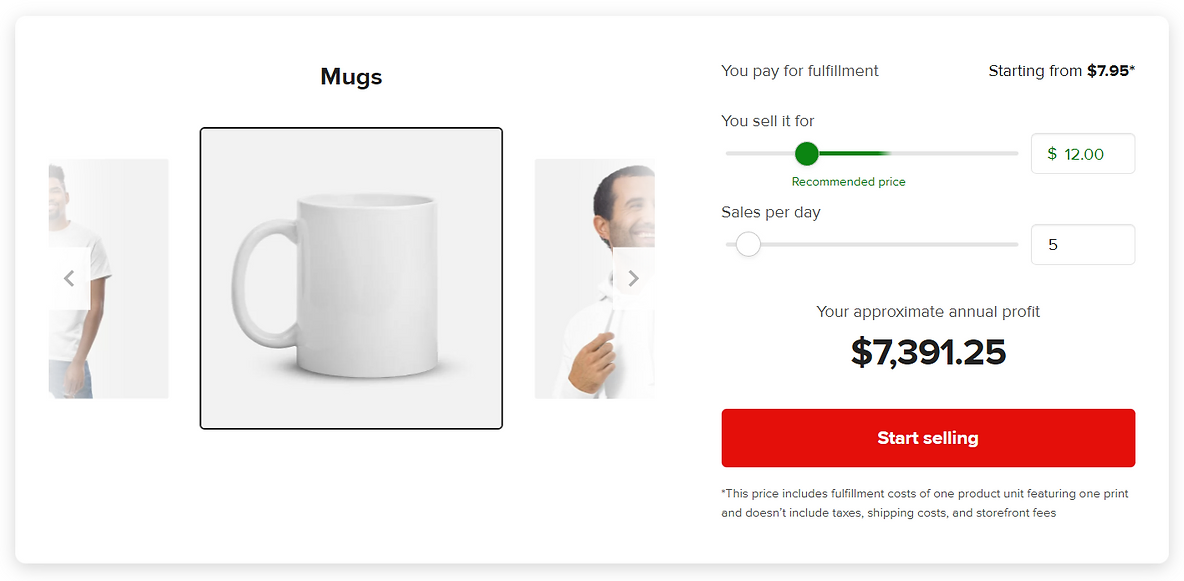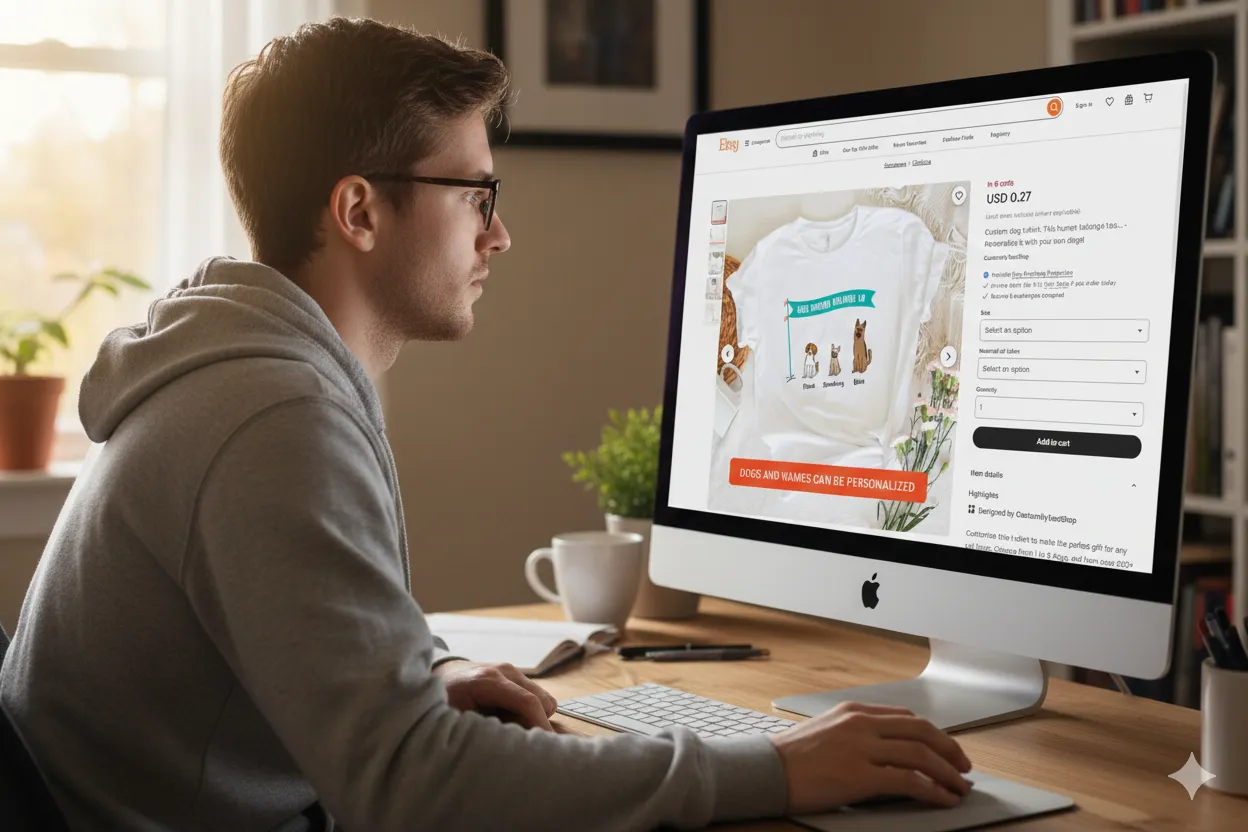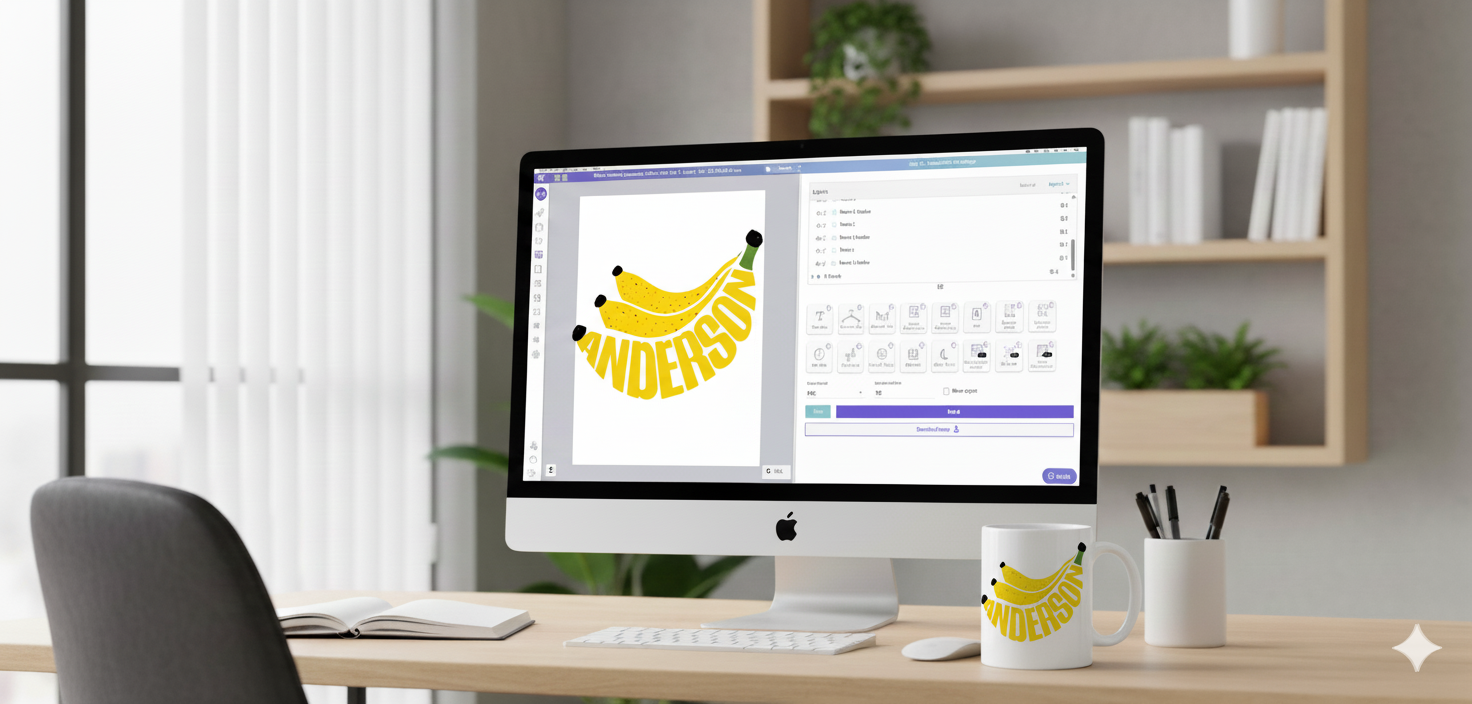Table of Contents
Ready to transform your store?
Try Customily for freePrint-on-demand (POD) is an increasingly popular business model for entrepreneurs who want to start an online store without having to manage inventory. POD suppliers will take care of all stocking, printing, and shipping of the products, allowing entrepreneurs to sell a wide range of items without having to keep stock on hand.
If you are just starting a print-on-demand business or are thinking about doing so, you are probably struggling to figure out at what price you should sell your products to cover expenses and make money 💰
Is there an exact method of calculation? 🤔 We know it is not easy at the beginning.
But don’t you worry! In this article, we'll break down all the different costs you must consider when setting your prices. After reading this guide, you’ll have a lot of tools to price your products as best as possible! 🙌
First things first
Before starting any type of business, it is crucial to research the market and the specific niche you want to target. Understanding the industry landscape will help you make informed decisions and set your business up for success.
Selling customized products through a print-on-demand model is different from selling mass-produced clothing, beverages, or jewelry. Similarly, market conditions vary across regions like America, Europe, and Asia, so adapting your strategy is essential.
By conducting thorough research, you can gather key insights to guide your pricing decisions:
✅ The price ranges commonly used in the print-on-demand industry.
✅ How your competitors position themselves in terms of price.
✅ Government and tax regulations that may affect your business.
✅ Consumer preferences, including what they are willing to pay for a customized product.
✅ The level of demand for a product and the corresponding market supply.
As a store owner, it's vital to compare prices of products with similar characteristics. Evaluating items of different materials or sizes won’t give you an accurate benchmark. Instead, focus on establishing a relevant price range, which will serve as the foundation for your pricing strategy.
So, what should you keep in mind when pricing your product? 👇

1. Product Costs 🛒
The cost of producing a print-on-demand item varies depending on the product and the supplier you choose. Some suppliers charge a flat fee per product, while others charge based on the size, color, and complexity of the design.
👉 As a general rule, you should expect to pay anywhere from $10 to $50 per product. This cost will be higher for items that require more intricate designs or printing methods.
2. Website Costs 💻
To successfully sell print-on-demand products, you'll need to set up an online store. The cost of building a website varies depending on the platform you choose and the level of customization required.
👉 Most entrepreneurs opt for an e-commerce platform like Shopify, which ranges from $29 to $299 per month. Alternatively, you can use a free platform like WordPress, but you'll need a hosting provider, which typically costs $10 to $30 per month.
If you're launching a print-on-demand store on Shopify, consider enhancing your site with Veda Builder. This Shopify page builder app offers a Free plan with up to 17 pages and over 150 sections and add-ons, allowing you to create a more engaging and professional online store. With Veda, you can go beyond standard Shopify themes and explore a variety of design options. Check out their template gallery via this link.
3. Marketing Costs 🎯
Once you've built your website, you'll need to promote your products to attract customers. This can be done through various channels, including social media advertising, influencer marketing, and email marketing.
👉 The cost of marketing varies depending on the channel and the size of your audience. As a general rule, you should expect to spend anywhere from $100 to $1,000 per month on marketing.

4. Other Costs 📦
In addition to product, website, and marketing costs, there are a few other expenses to keep in mind when starting a print-on-demand business. These include:
- Design software: If you plan to create your own designs, you'll need to purchase design software like Adobe Photoshop or Illustrator. These programs typically cost between $20 and $50 per month.
- Shipping and handling: Most print-on-demand suppliers handle shipping and handling for you, but you'll need to factor in the cost of shipping when pricing your products. Shipping costs vary depending on the size and weight of the item, as well as the destination.
- Taxes and fees: You'll need to pay taxes on your earnings and may also need to pay fees for using certain payment processors.
Tips for Keeping Costs Low 📉
Starting a print-on-demand business and selling products online doesn’t have to break the bank, tools like the Printify Etsy Calculator can help you estimate profits and make smarter decisions. Here are a few strategies to keep your costs under control:
✅ Choose products wisely: Focus on items with high profit margins and low production costs.
✅ Keep designs simple: Intricate designs can increase production costs, so opt for clean, cost-effective designs.
✅ Use free marketing channels: Social media and email marketing are powerful (and free!) ways to promote your products.
✅ Negotiate with suppliers: Many print-on-demand suppliers offer discounts for bulk orders or long-term partnerships—take advantage of these opportunities.
✅ Minimize shipping costs: Offer free shipping only for high-priced items or factor shipping costs into the product price to maintain profitability.
By applying these tips, you can maximize your profits while efficiently selling products online. 🚀

Time to choose a Pricing Strategy 🤓
Once you clearly understand the average cost of your product and the associated expenses, it’s time to create an action plan and carefully consider your pricing strategy.
Let's talk about pricing strategies you can choose from 👇.
Taking a market approach, prices are determined based on the level of competition. You need to compare your products with similar offerings in the market and establish a price range accordingly.
Then, you have three options:
- Prices Above Average: This approach assumes that you will surpass your competitors and provide your customers with a superior experience. You can offer complimentary gifts 🎁and enhance the quality of your visual content, such as professional photos or 3D presentations.
- Average Market Prices: This is a safe and reliable option that allows you to target a broad audience while ensuring consistent profitability. You will operate within the standard price range observed in the market.
- Prices Below Average: If you aim to stand out from the competition and attract attention, you can consider lowering your prices. ⚠ However, caution is advised as this approach may result in insufficient coverage of expenses, and customers may question the quality of a cheaper product.
Additionally, there are other pricing tactics you can consider:
- Anchor: First we set a fictitious high price and then we announce a lower price that becomes more attractive. You can announce that the price now is lower than before, or launch a special promotion like “30% OFF”!
- Dynamic: Decisions regarding pricing are made based on real-time demand. You will need to adjust prices periodically, aligning them with customer needs and market conditions.
- You can also appeal to the skimming strategy, where you set an initially high price and gradually decrease it. This approach allows you to generate significant profits while the product maintains its popularity.

The Best Strategy to Raise Your Prices
63% of global consumers say that they want to receive personalized products 😱. The numbers of product personalization are growing at a fascinating rate year by year.
This is a fantastic opportunity to position your business above the market average with higher-quality products and attractive to your customers 🙌
With a product customizer like Customily, you can create completely innovative templates and designs, and allow your customers to create their own products, accessing a live preview before making their purchase.
By creating unique and unrepeatable products that they can identify with 100%, your customers will be willing to pay a much higher price, and you will be giving them an incredible shopping experience 🤩
If you haven't tried Customily yet, what are you waiting for? You can try it for free for 9 days in your Shopify or Etsy store!
And if you have any doubts or would like to book a call with our sales team before subscribing, don't hesitate to reach us here!
Conclusion
Remember that you can't start thinking about pricing if you haven't done an analysis and evaluated the costs first ⛔
I know! It's a lot of information to process!
But don't worry, some POD suppliers offer suggested prices on their platforms to guide you and help you get an idea of the margins that a certain product can give you when you sell it.
👉 For example, this Printful calculator shows us an estimated profit margin according to the suggested price of the product and the quantity to be sold annually.

Starting a print-on-demand (POD) business can be a cost-effective way to enter the world of e-commerce. By understanding the various costs involved and implementing smart strategies to keep expenses low, you can build a successful POD business without breaking the bank.
Keep in mind that online pricing is not static—you can (and will!) adjust your prices multiple times 🤷♀️. Your print-on-demand pricing strategy will evolve based on seasonality, competition, and other market factors that impact your business.
But that’s the exciting part, right? Running a business requires adaptability, and online pricing is one of those areas that needs constant attention, revision, and fine-tuning 🔧.
Now you know exactly what numbers to track to maximize your profits!
Happy Selling! 🚀💸









.webp)







